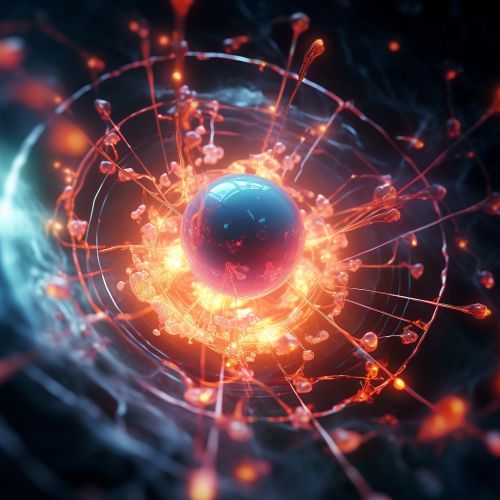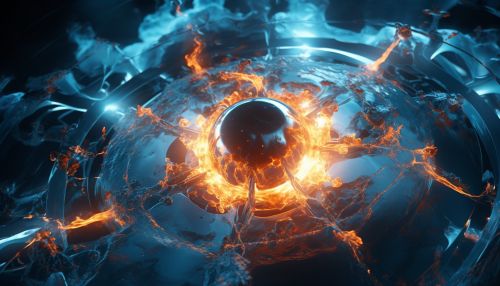Nuclear fission
Introduction
Nuclear fission is a nuclear reaction in which the nucleus of an atom splits into two or more smaller, lighter nuclei. The process often produces free neutrons and gamma photons, and releases a large amount of energy. It is an exothermic reaction that can release substantial amounts of energy both as electromagnetic radiation and as kinetic energy of the fragments (heating the bulk material where fission takes place).


History of Nuclear Fission
The discovery of nuclear fission is attributed to the German scientists Otto Hahn and Fritz Strassmann, who first observed the process in 1938. Their work was built upon by Lise Meitner and Otto Frisch, who coined the term "fission" and provided a theoretical explanation for the experimental results. This discovery led to the development of atomic bombs and nuclear power plants, which utilize the energy released by nuclear fission.
Mechanism of Nuclear Fission
Nuclear fission can occur spontaneously, but it is far more commonly induced by the absorption of a neutron by a heavy nucleus such as uranium-235 or plutonium-239. This absorption increases the instability of the nucleus, causing it to deform and eventually split. The resulting fragments are typically radioactive, leading to a chain reaction as they emit more neutrons that can induce further fissions.
Energy Release in Nuclear Fission
The energy released in nuclear fission is substantial, with a single fission event of uranium-235 releasing approximately 200 million electron volts (MeV) of energy. This energy is primarily carried away by the fission fragments, which are propelled at high speeds due to the repulsive forces between them. A smaller portion of the energy is carried away by the emitted neutrons and gamma rays.
Fission Chain Reactions
A fission chain reaction occurs when the neutrons produced by a fission event induce further fissions, leading to a self-sustaining series of reactions. This is the principle behind both nuclear weapons and nuclear power plants. In a nuclear weapon, the goal is to achieve a rapid, uncontrolled chain reaction, while in a nuclear power plant, the chain reaction is carefully controlled to produce a steady output of energy.
Nuclear Fission in Nuclear Power Plants
In nuclear power plants, the heat generated by nuclear fission is used to produce steam, which drives a turbine connected to a generator. The fission process is controlled by control rods, which absorb neutrons and thus regulate the rate of the chain reaction. The spent fuel from a nuclear power plant is highly radioactive and must be carefully managed to avoid environmental contamination.
Nuclear Fission in Nuclear Weapons
In a nuclear weapon, the goal is to achieve a rapid, uncontrolled chain reaction. This is typically achieved by using a conventional explosive to compress a sub-critical piece of uranium-235 or plutonium-239, bringing it to a critical density. The resulting fission chain reaction releases a large amount of energy in a very short time, resulting in a powerful explosion.
Safety and Environmental Concerns
While nuclear fission has the potential to provide a significant source of energy, it also presents a number of safety and environmental concerns. These include the risk of a nuclear meltdown, the production of radioactive waste, and the potential for the materials used in nuclear reactors to be used in the production of nuclear weapons.
